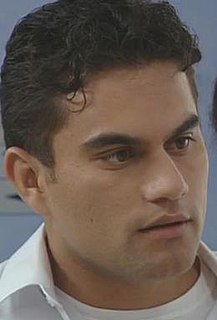
The Polynesian narrative or Polynesian mythology encompasses the oral traditions of the people of Polynesia, a grouping of Central and South Pacific Ocean island archipelagos in the Polynesian Triangle together with the scattered cultures known as the Polynesian outliers. Polynesians speak languages that descend from a language reconstructed as Proto-Polynesian that was probably spoken in the Tonga - Samoa area around 1000 BC.
In Māori mythology, Rongo or Rongo-mā-Tāne is a major god (atua) of cultivated plants, especially kumara, a vital crop. Other crops cultivated by Māori in traditional times included taro, yams (uwhi), cordyline (tī), and gourds (hue). Because of their tropical origin, most of these crops were difficult to grow except in the far north of the North Island, hence the importance of Rongo in New Zealand.

In Māori mythology the primal couple Rangi and Papa appear in a creation myth explaining the origin of the world. In some South Island dialects, Rangi is called Raki or Rakinui.

In Māori mythology, Tāne is the god of forests and of birds, and the son of Ranginui and Papatūanuku, the sky father and the earth mother, who lie in a tight embrace. Their many children live in the darkness between them.

In Māori mythology, Tangaroa is one of the great gods, the god of the sea. He is a son of Ranginui and Papatūānuku, Sky and Earth. After he joins his brothers Rongo, Tūmatauenga, Haumia, and Tāne in the forcible separation of their parents, he is attacked by his brother Tāwhirimātea, the god of storms, and forced to hide in the sea. Tangaroa is the father of many sea creatures. Tangaroa's son, Punga, has two children, Ikatere, the ancestor of fish, and Tū-te-wehiwehi, the ancestor of reptiles. Terrified by Tāwhirimātea's onslaught, the fish seek shelter in the sea, and the reptiles in the forests. Ever since, Tangaroa has held a grudge with Tāne, the god of forests, because he offers refuge to his runaway children.
In mythology of Mangaia and the southern Cook Islands, Vatea is the father of gods and men. His mother is Varima-te-takere, who lives deep in Avaiki, the underworld. She plucks off a piece from her right side and it becomes Vatea or Avatea.
In Polynesian mythology, Hawaiki is the original home of the Polynesians, before dispersal across Polynesia. It also features as the underworld in many Māori stories.

Ngāi Te Rangi or Ngāiterangi is a Māori iwi, based in Tauranga, New Zealand. Its rohe extends to Mayor Island / Tuhua and Bowentown in the north, to the Kaimai Range in the west, south of Te Puke and to Maketu in the east.

Ngāti Tūwharetoa is an iwi descended from Ngātoro-i-rangi, the priest who navigated the Arawa canoe to New Zealand. The Tūwharetoa region extends from Te Awa o te Atua at Matata across the central plateau of the North Island to the lands around Mount Tongariro and Lake Taupo.
In Māori mythology, Arawa was one of the great ocean-going, voyaging canoes that was used in the migrations that settled Aotearoa.
In Māori tradition, Ngātoro-i-rangi (Ngātoro) is the name of a tohunga (priest) prominent during the settling of Aotearoa by the Māori people, who came from the mythical homeland Hawaiki.
Io Matua Kore is often understood as the supreme being in Polynesian narrative of the Māori people of New Zealand.
The Polynesian Society is a non-profit organization based at the University of Auckland, New Zealand, dedicated to the scholarly study of the history, ethnography, and mythology of Oceania.

In Māori mythology, as in other Polynesian traditions, Māui is a culture hero and a trickster, famous for his exploits and cleverness.

Te Rangitahi "Rangi" Heremaia is a fictional character on the New Zealand soap opera Shortland Street who was portrayed by Blair Strang from 1995 to 2001.
In Cook Islands mythology, Tu-metua was the sixth child and most beloved daughter of the mother goddess, Vari. Tu-metua lived in Te-enua-te-ki "The-mute-land". This was a place said to have no spoken language, but communication only by signs—such as nods, raised eyebrows, grimaces, and smiles. Gill states that Vari and Tu-metua lived together in Enua-te-ki, but he was in error in treating Te Aiti as a descriptive word and not as Vari's own distinct land. Mamae's native text, however, shows that the two lands were close together. It also explains the meaning of Tu-metua's name, which differs from Gill's translation as "Stick-to-the-parent".
In Cook Islands mythology, Raka (Trouble) was the god of winds and storms. He was the fifth child of the Great Mother, Vari. Raka found a congenial home in Moana-Irakau. According to Gill, Raka received from Vari a great basket, in which contained the hidden winds, as well as the knowledge of many useful inventions. The children of Raka are the numerous winds and storms which distress mankind. Each child was assigned a hole in the horizon through which he blew at pleasure. Gill's informant, Mamae, gives his wife and children but not the parents of the wife, Takatipa; whoever they were, they formed additional contemporaries of Vari.
In Cook Islands mythology, Tango (Support) was the third child of the primordial mother goddess, Varima-te-takere. He was assigned to live at Enua-kura. According to Mamae, Gill's informant, Tango was the progenitor of a skilled fishing family. That the six grandsons of Tango were good workers is shown in the native text. The enclosure (akeke) for fish mentioned in a chant has not been retained in the local culture of the people.

Nympholepsy was the belief of the ancient Greeks that individuals could be possessed by the nymphs. Individuals who considered themselves nympholepts would display a great religious devotion to the nymphs. An example is Archedemos of Thera, who built the sanctuary of the nymphs in the Vari Cave northeast of Attica, Greece.










